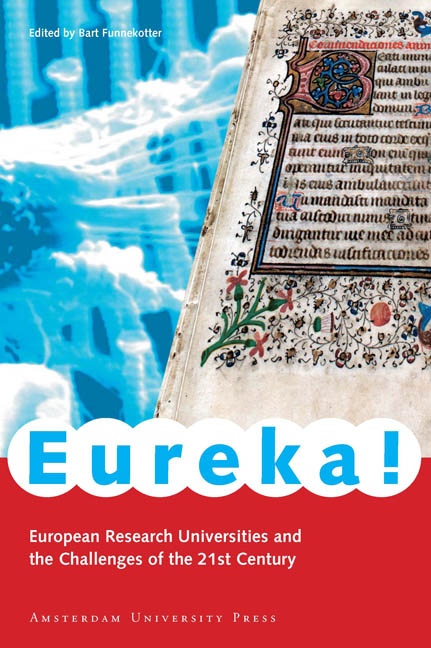Book contents
- Frontmatter
- Contents
- Foreword
- Introduction: Challenges of the Twenty-first Century
- Cambridge: Cambridge University
- Edinburgh: University of Edinburg
- Geneva: Université de Genève
- Heidelberg: Ruprecht-Karls-Universität
- Helsinki: Helsingin Yliopisto
- Leiden: Universiteit Leiden
- Louvain: Katholieke Universiteit Leuven
- Milan: Università Degli Studi Di Milano
- Munich: Ludwig-Maximilians-Universität
- Oxford: Oxford University
- Stockholm: Karolinska Institutet
- Strasbourg: Université Louis Pasteur
Strasbourg: Université Louis Pasteur
Published online by Cambridge University Press: 23 January 2021
- Frontmatter
- Contents
- Foreword
- Introduction: Challenges of the Twenty-first Century
- Cambridge: Cambridge University
- Edinburgh: University of Edinburg
- Geneva: Université de Genève
- Heidelberg: Ruprecht-Karls-Universität
- Helsinki: Helsingin Yliopisto
- Leiden: Universiteit Leiden
- Louvain: Katholieke Universiteit Leuven
- Milan: Università Degli Studi Di Milano
- Munich: Ludwig-Maximilians-Universität
- Oxford: Oxford University
- Stockholm: Karolinska Institutet
- Strasbourg: Université Louis Pasteur
Summary
University of Strasbourg in facts and figures:
Founded in 1971
18,055 students
3,165 staff
Budget € 137.4 million
In the morning light, white laboratory coats flit back and forth in the Rue Blaise Pascal, moving between the Le Bel Institute and the chemistry faculty. Sometimes two coats stop to kiss a greeting. The tall faculty building may look rather like a giant gas lighter, but it has been a long time since any experiments took place inside. Security issues are partly to blame, although some people also claim that the building sways slightly in high winds, interfering with precision measurements. That an institute of technology could allow such a shortcoming to occur is a subject that students at Strasbourg's Université Louis Pasteur (ULP) never tire of discussing with each other. Whether there is any truth in the story is unimportant: it has already taken its place in the canon of urban legends connected with the sole French university in the League of European Research Universities.
In the Alsace region, it is not unusual for a building's name or function to change with the years. Strasbourg, the region's capital, is located on the German border; over the centuries it has found itself governed alternately by France and Germany. By 1621 a university had grown out of a local Protestant school, but it wasn't until a later period of German dominance (1870 to 1918) that its status was finally raised when Emperor Wilhelm decided to make it a showpiece institution. However, even when the commotion caused by the war was over, the university had not yet seen its final transformation.
An interesting glimpse of the ULP's further development can be found in the Rue Blaise Pascal, where a number of its lecture halls and administration buildings are located. Just a few hundred metres along from them are the buildings of the Université Robert Schuman. Although architecture confirms a common history, the two universities could hardly be more diverse. In 1971 the spirit of the late 1960's inspired a call for more democracy and direct involvement;the ensuing schism split the old university into Strasbourg's present three institutions: Louis Pasteur (where Pasteur himself worked), Robert Schuman and Marc Bloch. Each is an independently operating university and their fields of research generally do not overlap.
- Type
- Chapter
- Information
- Eureka!European Research Universities and the Challenges of the 21st Century, pp. 150 - 160Publisher: Amsterdam University PressPrint publication year: 2005



